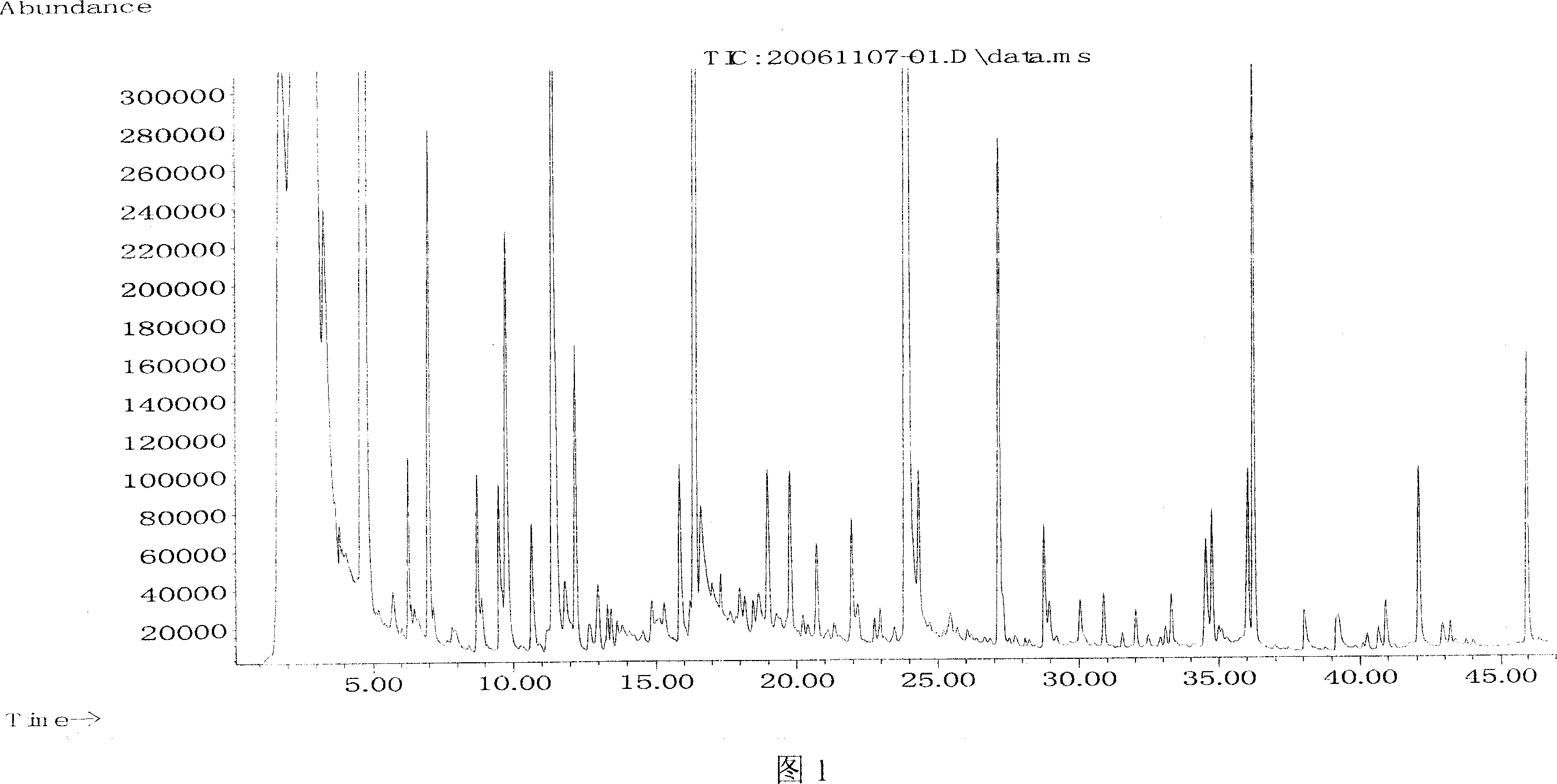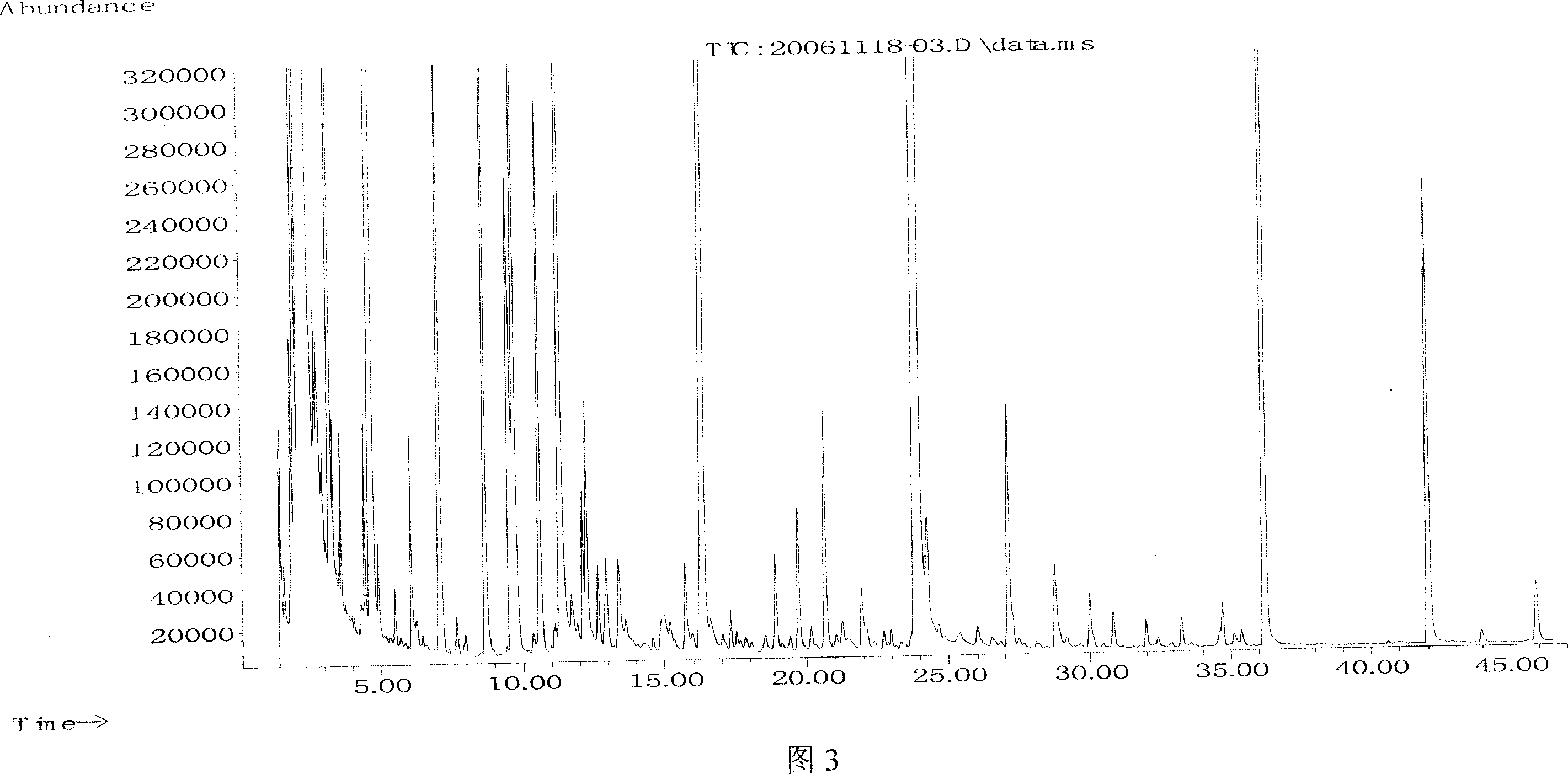Method for determining volatile element in shaoxing wine
A technology for volatile components and rice wine, applied in the field of headspace solid-phase microextraction and gas chromatography-mass spectrometry, can solve the problem of no research on the trace components of rice wine, and achieve the effect of improving the quality and accuracy of rice wine
- Summary
- Abstract
- Description
- Claims
- Application Information
AI Technical Summary
Problems solved by technology
Method used
Image
Examples
Embodiment 1
[0021] Dilute 12% (v / v) Jinfeng Jinxiu 12-year-old rice wine with deionized water to a final alcohol content of 6% (v / v), draw 6ml wine sample into a 15mL headspace bottle, add 5μL internal standard solution and 2.5g sodium chloride, screw the cap tightly. Stir and balance in a water bath at 50°C at a speed of 500rpm for 15min, insert a 50 / 30μm DVB / CAR / PDMS extraction head, and extract at 50°C and 500rpm for 30min. Then the extraction head was inserted into the gas chromatograph inlet, and desorbed at 250 ° C for 5 min in splitless mode. The DB-Wax capillary column was used for separation, and the initial column temperature was set at 50°C (hold for 0min); the temperature was raised to 80°C at a rate of 20°C / min (hold for 0min); and then the temperature was raised to 230°C at a rate of 3°C / min ( keep 0min). With helium as the carrier gas, the flow rate is 2ml / min. The separated samples were identified by mass spectrometry (Agilent 5975 MSD). Mass spectrometry conditions: E...
Embodiment 2
[0026] Dilute the 14% (v / v) Jinfengtejiafan 5-year-old rice wine with deionized water to a final alcohol content of 6% (v / v), draw 6ml of the wine sample into a 15mL headspace bottle, add 5μL Standard solution and 2.5g sodium chloride, screw the cap tightly. Stir and balance in a water bath at 50°C at a speed of 500rpm for 15min, insert a 50 / 30μm DVB / CAR / PDMS extraction head, and extract at 50°C and 500rpm for 30min. Then the extraction head was inserted into the gas chromatograph inlet, and desorbed at 250 ° C for 5 min in splitless mode. Use DB-Wax capillary column for separation, set the initial column temperature to 50°C (hold for 0min); raise the temperature to 80°C at a speed of 20°C / min (hold for 0min); then raise the temperature to 230°C at a speed of 3°C / min (keep 0min). With helium as the carrier gas, the flow rate is 2ml / min. The separated samples were identified by mass spectrometry (Agilent 5975 MSD). Mass spectrometry conditions: EI ionization source; electro...
Embodiment 3
[0031] Dilute the 10% (v / v) Shazhou Youhuanghuakai Fugui 8-year-old yellow rice wine with deionized water to a final alcohol content of 6% (v / v), draw 6ml of the wine sample and place it in a 15mL headspace bottle, add 5μL internal standard solution and 2.5g sodium chloride, screw the cap tightly. Stir and balance in a water bath at 50°C at a speed of 500rpm for 15min, insert a 50 / 30μm DVB / CAR / PDMS extraction head, and extract at 50°C and 500rpm for 30min. Then the extraction head was inserted into the gas chromatograph inlet, and desorbed at 250 ° C for 5 min in splitless mode. Use DB-Wax capillary column for separation, set the initial column temperature to 50°C (hold for 0min); raise the temperature to 80°C at a speed of 20°C / min (hold for 0min); then raise the temperature to 230°C at a speed of 3°C / min (keep 0min). With helium as the carrier gas, the flow rate is 2ml / min. The separated samples were identified by mass spectrometry (Agilent 5975 MSD). Mass spectrometry c...
PUM
 Login to View More
Login to View More Abstract
Description
Claims
Application Information
 Login to View More
Login to View More - R&D
- Intellectual Property
- Life Sciences
- Materials
- Tech Scout
- Unparalleled Data Quality
- Higher Quality Content
- 60% Fewer Hallucinations
Browse by: Latest US Patents, China's latest patents, Technical Efficacy Thesaurus, Application Domain, Technology Topic, Popular Technical Reports.
© 2025 PatSnap. All rights reserved.Legal|Privacy policy|Modern Slavery Act Transparency Statement|Sitemap|About US| Contact US: help@patsnap.com



